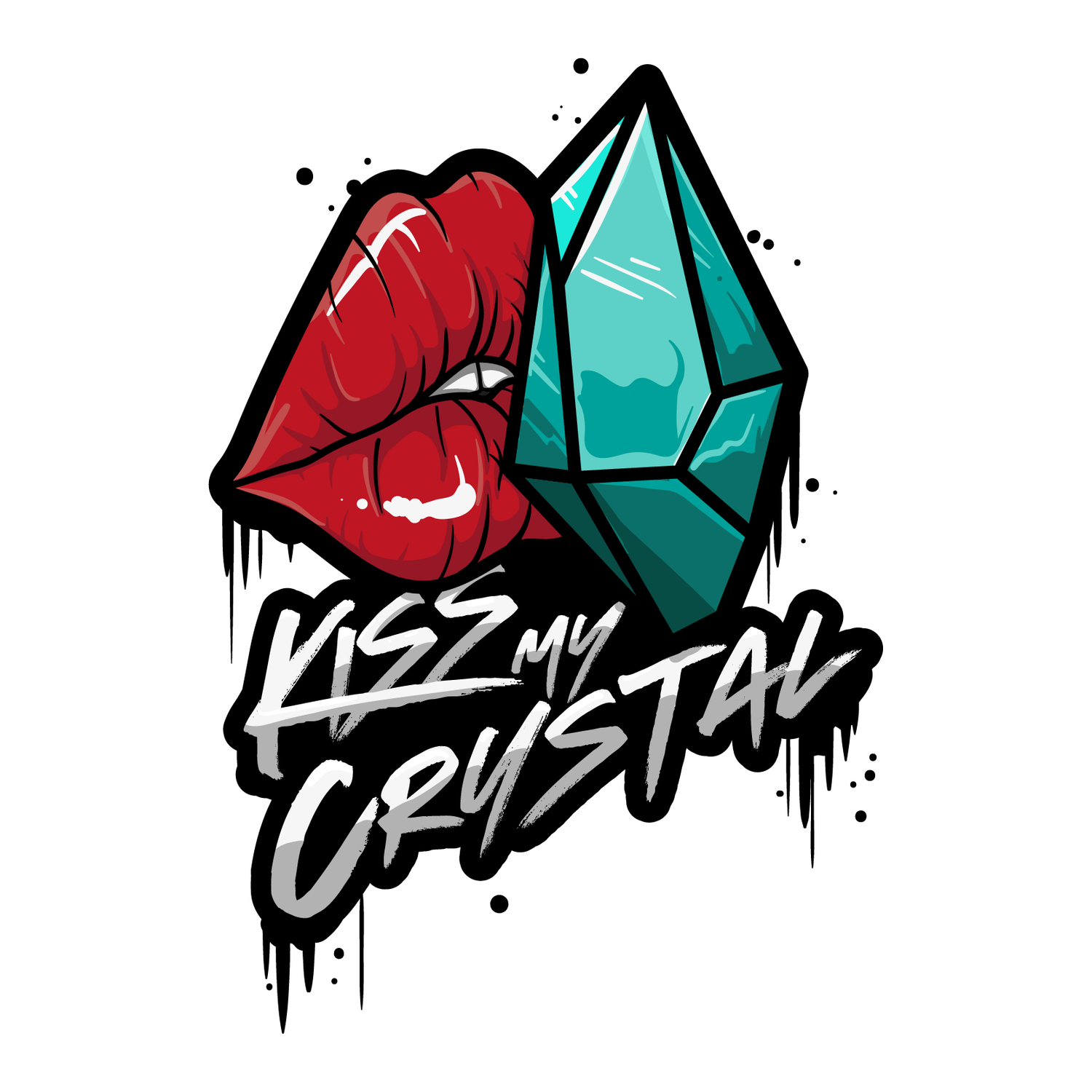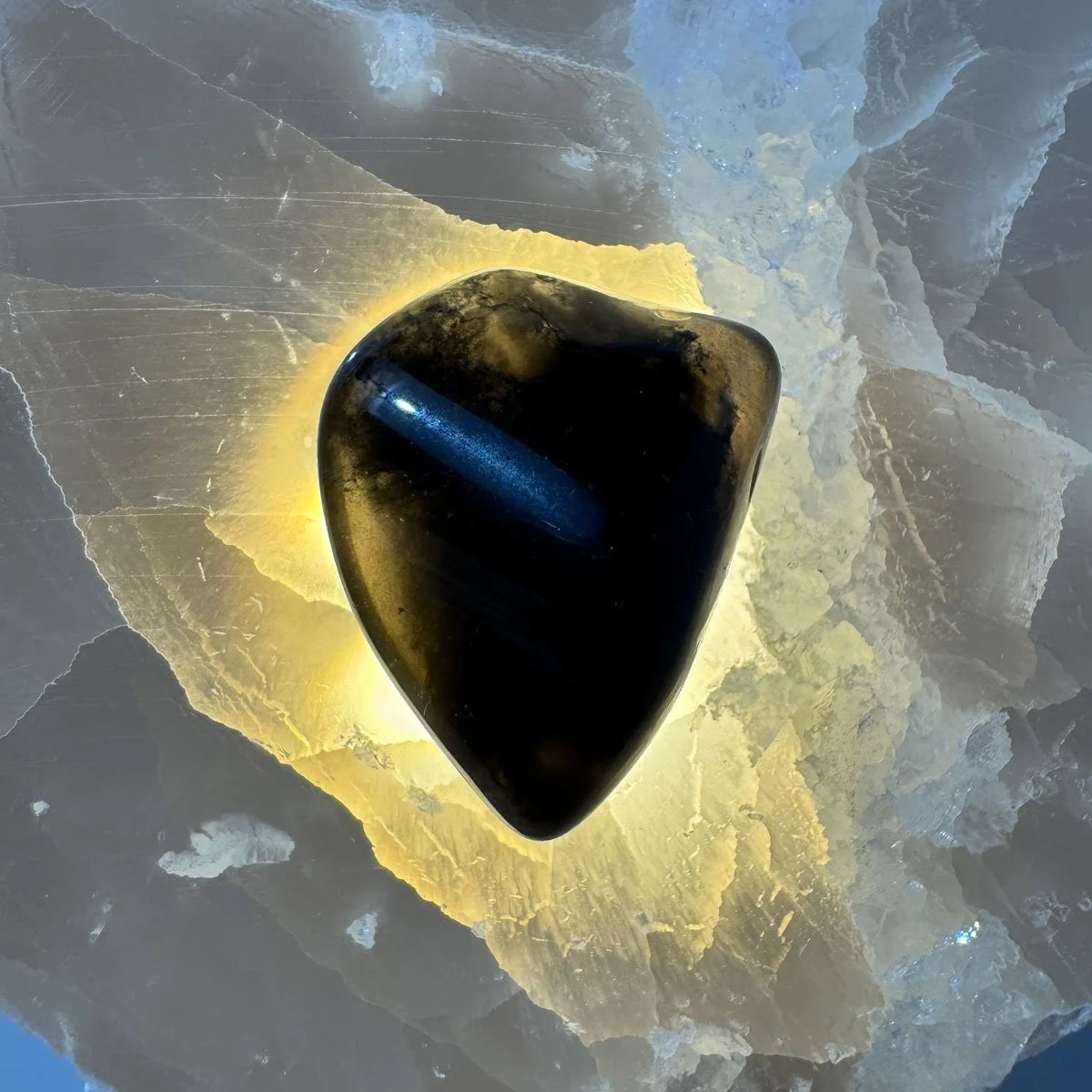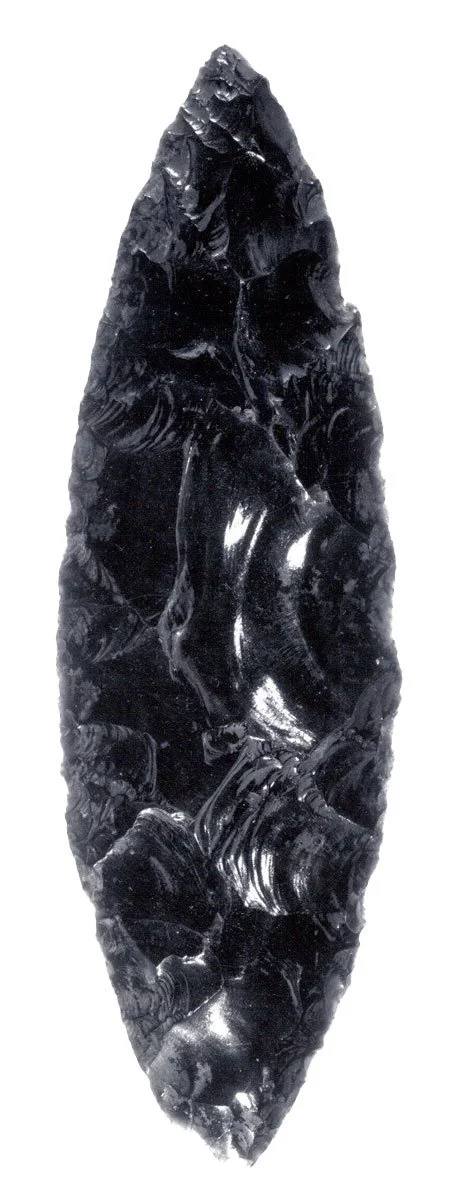OBSIDIAN.
The Black Flame
Obsidian is all about fire energy, which comes from its origin below the surface, from the dark chambers and vents of molten magma. Obsidian uses its fire to burn through doubt, confusion, and negative energy. Obsidian is used to help you clear your path and move on from those traumas of the past that have held you back. It acts as a grounding agent, all the while lighting a flame within you to make choices that are right for you, not just those around you. You can use a black Obsidian knife for cord-cutting rituals when you need to let go of something or someone.
Obsidian is a form of natural volcanic glass. Obsidian is created when a volcanic lava flow is cooled rapidly. It is brittle and can have very sharp edges when it fractures. The colour of Obsidian varies with the impurities it contains and Obsidian can occur anywhere in the world which has had a volcanic eruption producing lava. The name Obsidian comes from its “discovery” by Obsidius, who was an ancient Roman traveller and explorer. During his travels through what is now Ethiopia, he came across Obsidian and it later became a “must-have” item in Rome.
Types of Obsidian
The most common type of Obsidian you will see is Black Obsidian but there are other ‘fancy’ varieties of Obsidian you will come across, such as Snowflake, Mahogany, Gold Sheen, and Silver Sheen.
Gold Sheen Obsidian and Silver Sheen Obsidian have black bases with glittering effects caused by tiny light-reflecting gas bubbles and impurities from minerals such as magnetite or hematite.
Silver Sheen Obsidian
Gold Sheen Obsidian
Snowflake Obsidian has a black base covered in white radial-shaped speckles resembling snowflakes caused by Cristobalite inclusions. Some fake Snowflake Obsidian is on the market; you can identify it because the white inclusions are not radial.
Snowflake Obsidian
Apache Tears are also Obsidian. They are small brown/black opaque Obsidian pebbles that are found in Arizona and Nevada, with myths surrounding their creation. Read more here >>
Apache Tear. A form of volcanic glass that appears black and opaque, although light can be shone through it.
The more rare Obsidians are the multi-coloured Rainbow and Fire varieties.
Rainbow Obsidian is mainly found in Mexico and some US locations. Aligned nanorods of hedenbergite create the distinctive striped rainbow effect.
Rainbow Obsidian ‘Nipple’ from the private collection of specialist crystal jeweller Zoe Nina Jewelry @zoe__nina__jewelry
Fire Obsidian, or Fire Sheen Obsidian, is very rare! It only comes from Steens Mountain Wilderness in Oregon from a single volcanic eruption around 4-5 million years ago. It almost looks fake (it’s not) with its multi-coloured oil-slick pattern on its surface. This colourful display is caused by nanoparticles of magnetite. The Etsy store Jemstoners, from Oregon, does appear to be selling genuine pieces - view here >>
Green Obsidian, whose beautiful green colour comes from inclusions of iron and or chromium is a natural volcanic glass found in the US, Mexico and Guatemala. The Green Obsidian found in Ethiopia has the tradename Elmerite. However, it is suspected that a lot of the Green Obsidian on the market (especially the Ethiopian) is fake, so go to a trusted specialist if you wish to purchase any of the real deal.
Historical Uses of Obsidian
Objects made from natural Obsidian, such as tools, blades, polished mirrors, and arrowheads, have been found in early Neolithic dig sites across Europe, and at Ancient Mesoamerican sites in the US.
2 x Two-finger amulets from the late Egyptian period, 664–332 B.C. These amulets were usually found on the torso at the incision point of organ removal as part of the mummification process. They were believed to magically heal the wound. Traces of gilding can be seen in the example on the right.
© The Met Museum
Obsidian Amulet from the Minoan culture, ca. 1650–1500 BCE.
© The Met Museum
Obsidian Mirror from Ecuador, made before the 15th century.
© The Met Museum
Obsidian Aztec Blade, 13th–16th century.
© The Met Museum
Obsidian Ear Spool from Mexico, made before the 16th century.
© The Met Museum
Obsidian Roman revetment slab fragment (decorative panel), 1st century CE.
© The Met Museum
Obsidian blade from the Cycladic culture, ca. 2700–2200 BCE.
© The Met Museum
Kohl Jar belonging to Sithathoryunet, from the Egyptian Middle Kingdom, ca. 1887–1813 B.C.
© The Met Museum
Obsidian Scarab Inscribed with Hieroglyphs, Egyptian Middle Kingdom, ca. 1802–1640 B.C.
© The Met Museum
Buyer’s Guide to Obsidian
Private Buyers
Black Obsidian is a perfect witch tool. An Obsidian sphere can be used for scrying, an Obsidian knife for cord-cutting spells, and an Obsidian amulet/ beaded bracelet can be used for grounding and protection. Black Obsidian is not an expensive material, so you should expect to pay only between €/$12-25 for a 4-7cm sphere and around €/$60-80 for a 10cm+ sphere.
If you are buying Obsidian as a collector, I would suggest opting for one of the rare varieties, such as Rainbow Obsidian or for those real specimen collectors, a Fire Obsidian from Oregon.
Retail Buyers
Obsidian is a good seller in a retail or online store. There are usually people looking for it and you can buy it wholesale relatively cheaply. Always be aware of packaging it! As a form of natural glass, it will break if knocked or dropped. Breakage will also result in razor-sharp edges, so handle with care. Tumbles sell well and can be retailed for €/$1-2, making it an ideal entry-level crystal for buyers. The Black Obsidian Spheres also sell really well at any size. Carved items such as knives or skulls also do well if the price point is sensible for the material. If you sell jewellery, then maybe the beaded Obsidian bracelets would do well. Be careful when buying Rainbow Obsidian bracelets - they can look crap - so only buy if you get to see them first and ensure you can see the rainbow in them.
In terms of the more fancy Obsidians, Snowflake Obsidian is usually a top seller, but you should stock the large tumbles, palm stones or flat discs so that the pattern is visible. Rainbow Obsidian, Gold Sheen Obsidian, and Silver Sheen Obsidian always sold well, especially on Instagram Live Sales where you can really show off the sparkly flash.
If you are buying Obsidian Towers of any variety from the wholesalers in China, get them to check the whole piece for damage, check that the base is cut straight and that the tip is properly protected for shipping. Also, make them visually confirm any pieces that are meant to have a ‘sheen’ actually do, or you will be paying over the odds for basically black Obsidian.
Quick Guide | Obsidian
Zodiac: Obsidian is associated with the zodiac sign Scorpio.
Ruling Planet: The ruling planets for Obsidian are Pluto, Saturn, and Earth.
Chakra: Obsidian is associated with the Root (Muladhara) Chakra.
Element: Obsidian is aligned with the element of Fire.
Crystal Charging: Obsidian can have its build-up of energy discharged into the earth by placing it on the ground or cleansed with Sage smoke. Obsidian can be recharged in the Sun for a few minutes however, as it is a form of glass, be careful that it isn’t reflecting the sun's rays onto anything that could catch fire. You can also recharge your Obsidian under the Full Moon.
Crystal Elixir: Obsidian can be used for making crystal elixirs as it is a hard silica formed as volcanic glass. Be careful when dropping Obsidian into a container as it could chip, creating hazardous pieces of glass.
Crystal Care: Obsidian can be cleaned with warm, soapy water or a soft cloth.
The chemical formula for Obsidian: 70% SiO₂ plus other oxides.
















